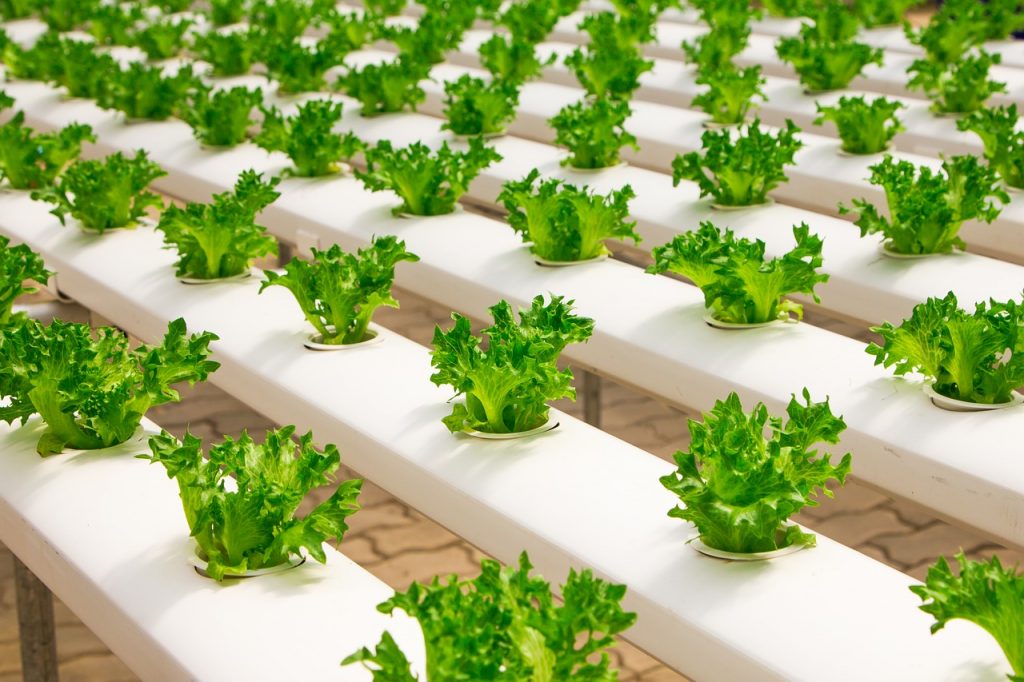Editor’s note: This post has been updated and broken links removed. Please see our policy on broken hyperlinks for more.
A few years ago the term “hydroponic” may have conjured up a particularly fragrant cloud in your mind, but these days the horticultural subset is becoming a more popular way of growing produce.
Most big grocery stores have at least one type of hydroponic vegetable on the shelves, usually lettuce, but everything from cucumbers, herbs, strawberries, and tomatoes are growing increasingly available.
There are many methods for growing food this way, but all are done without soil, often with the roots of the plant suspended in a water-based solution fortified with nutrients.
What are the pros and cons of growing plants hydroponically? Does the method of production effect nutrition? I’m glad you asked!
PROS
- Grow anywhere. Proponents of hydroponic produce champion the ability to not only grow in small spaces but in locations where you wouldn’t typically be able to farm by traditional methods. Living in the middle of the city? Great! Got some land in the cold woods of the north? No problem! This method of production may also help solve issues of food insecurity by bringing fresh produce to places where there is typically little access.
- Grow any time. Being able to control the growing environment extends the traditional season as well. You don’t have to worry about the short window for luscious summer tomatoes when it can be summer year-round in an indoor farm, and there’s no fear of an unexpected spring frost to limit your berry harvest.
- Reduce exposure to toxins. Because hydroponics are grown indoors, there’s less of a need for potentially harmful pesticides and other chemicals to be sprayed on the crop. Without soil, we can also avoid the worry that harmful heavy metals may be lurking in the ground and absorbed into the plants.
- Lower environmental impact. As for environmental considerations like water usage, some methods utilize as little as 10 percent of the water required by conventional soil farming, according to PBS, such as aquaponics, which introduces fish into the water to provide nitrogen that the plants need to thrive. Growing produce close to home also eliminates the environmental effect of having fresh fruit flown into Alaska in the middle of winter or tomatoes driven in from Mexico.
CONS
- Higher prices. Although hydroponics may cost less to produce, not using pesticides and herbicides opens doors for farmers to become certified organic, and thus, sell their product for a higher cost.
- Potential gut health issues. Depending on the makeup of the water-based solution in which hydroponic produce is grown, you may be missing out on beneficial bacteria found in soil-grown fruits and vegetables. This can affect the microbiome in your gut, which houses 70 percent of your immune system.
- Gradual eradication of traditional organic farmers. Certified organic farmers have petitioned multiple times to make hydroponic producers ineligible for the accreditation, as the method of production is inherently misaligned with their values of maintaining soil fertility, and the rise of hydroponic competition could eventually squeeze them out. The National Organics Standards Board has represented the farmers on this issue, but so far the National Organic Program has not accepted its recommendations.
As for the nutritional difference between the various methods of growing crops, that will depend on a variety of factors, such as the ingredients of the growing solution, lighting, etc. According to nutrition expert Marion Nestle, hydroponic fruits and vegetables may be just as nutritious, if not even more, than their conventional counterparts
“I’ve seen hydroponic producers who have tested their leafy greens for key nutrients, and the amounts fall well within normal limits for their crop and are sometimes even higher,” Nestle told the New York Times in December.
